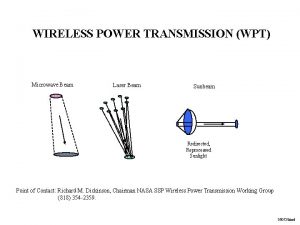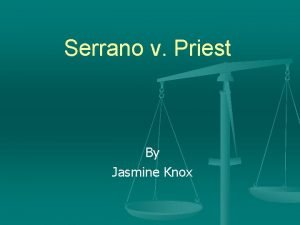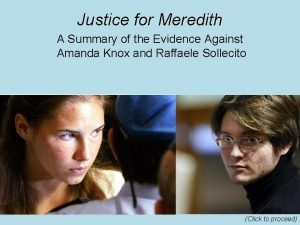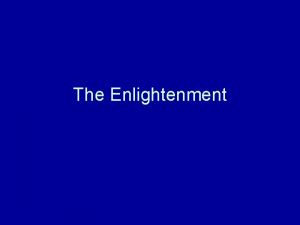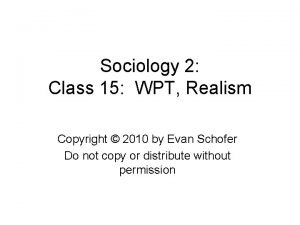Old SNRs Knox Long for WPT 8 Paris













- Slides: 13

Old SNRs Knox Long for WPT 8 Paris 2014

Introduction • Nearly all members of the Old SNRs and Young SNRs WPTs were on both teams since the science of both types of objects is almost the same • Specific questions discussed in the Old SNR WP – – What are the progenitors of older SNRs? What is the physics of mixed morphology SNRs? What is the physics of interstellar shocks? How do PWNe interact with their environments? • Our recommendations for PV phase targets in both groups represent our consensus of where there is the greatest science return from Astro-H, given the relatively modest time available in the PV Phase

Mixed Morphology SNRs • Mixed morphology SNRs are SNRs with significant central concentrations of X-ray emission • They are nearly always associated with interactions with dense ISM gas • Suzaku discovered that X-ray emission in many MM SNRs is dominated by recombination line and continuum, but whether underlying cause is diffusion of hot and cold gas or adiabatic expansion is not known

W 49 B – Central region already known to be dominated by ejecta emission, and shows strong radiative recombination continuum (RRC) implying rapidly cooling plasma

Proposal Goals– W 49 B • Determine the physical conditions of the RRC plasma in W 49 B to help resolve the controversy over whether RRCs arise via – Adiabatic expansion – conduction • Refine abundances to establish whether W 49 B is Ib/c explosion as suggested by Lopez et al 2013 and • Accurately measure velocities of ejecta • Use SXS + HXI observations to obtain spectrum over very broad band to refine overall model of Xray and g-ray emission

• Broad-band spectrum of W 49 B with the same broadening in Figure 1 (black), compared with no broadening model (cyan). • (b) Same as (a), but a close-up view of the Ni Heα–Fe Heβ band

• Simulated spectra of Fe Heα band with a 200 -ks SXS observation with a line broadening of 1000 km s− 1 • The ratio of the two spectra (Models 1 and 3), normalized at the energy of Fe Heα “w”. – The two models represent the extreme cases allowed by Suzaku – Differences show up primarily in the statellite lines

2 – Physics of ISM shocks • • • Previous observations Cygnus Loop and other old SNRs have yielded abundance ratios that are sub-solar, but analysis ignores the likely effects of resonance scattering and charge exchange in altering line ratios Separate turbulent and bulk velocities in clouds using observations at of shocks viewed edge on Obtain accurate abundances of shocked gas in regions where earlier observations suggest sub-solar abundances 50 ksec - SXS

Cygnus Loop • • he Cygnus Loop is a proto-typical limbbrightened SNR, and is one of the nearest and least obscured SNRs. Since the blastwave has hit a dense cavity wall, its rim is extremely bright, making it an excellent laboratory to study the physics of SNR shocks as well as the interstellar medium. Recently, based on a detailed Suzaku mapping of this remnant, Katsuda et al. (2011, Ap. J, 730, 24) found a possible signature of CX X-ray emission; part of the very edge of the Loop shows anomalous Xray emission at ∼ 0. 7 ke. V, which may be due to contamination of CX-induced O Heγ (plus δ and ε? ) lines and/or Fe L lines (Cumbee et al. 2014, Ap. JL in press). In addition, Miyata et al. (2008, PASJ, 60, 521) showed the importance of resonance-line scattering at the bright northeastern rim.

Proposal Goals – Cygnus Loop

Proposal – Cygnus Loop • 5 relatively short 15 - 30 ksec pointings to explore the physics of shocks totaling 110 ksec • SE rim – 2 pointings (30 and 20 ks) one at the very edge and one interior to study radial varaiton in CX emission • W rim – 1 pointing (30 ks) to sutdy azimuthal variations in CSX • NE limb • XA region

Simulation • Use the ratio of O Hea to O He gamma to measure the importance of CX emision • Need to measure this ratio to 10% • Exposures times defined to obtain at least 10**4 counts per observaions

Summary • Astro-H, especially SXS, is well suited to study old SNRs and resolve important problems associated with them • Our proposed observations will demonstrate the capabilities of Astro-H W 28
